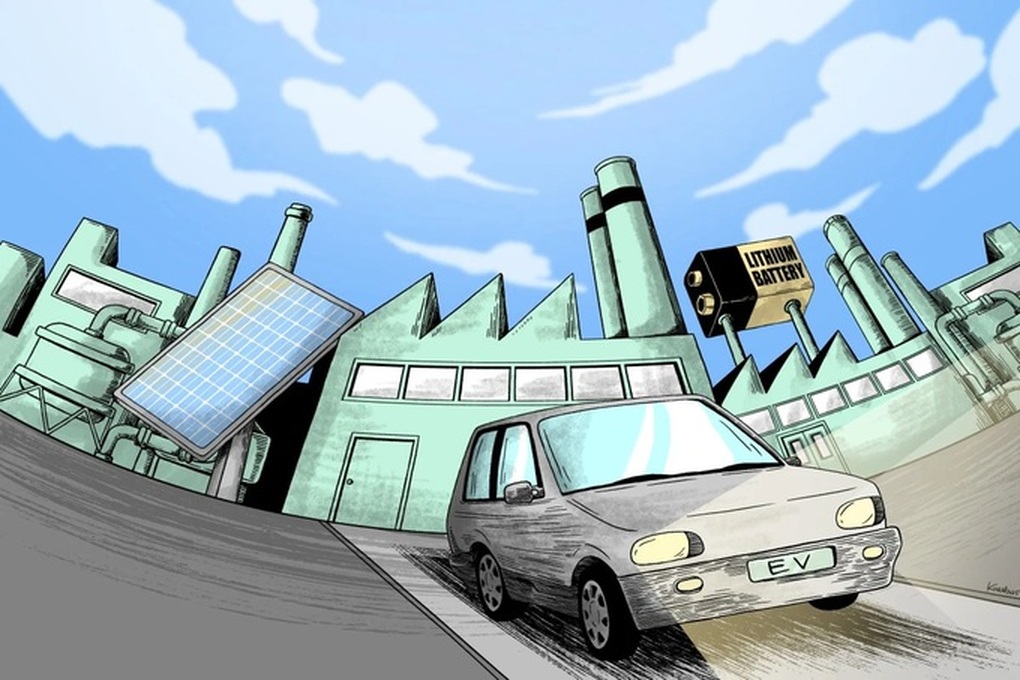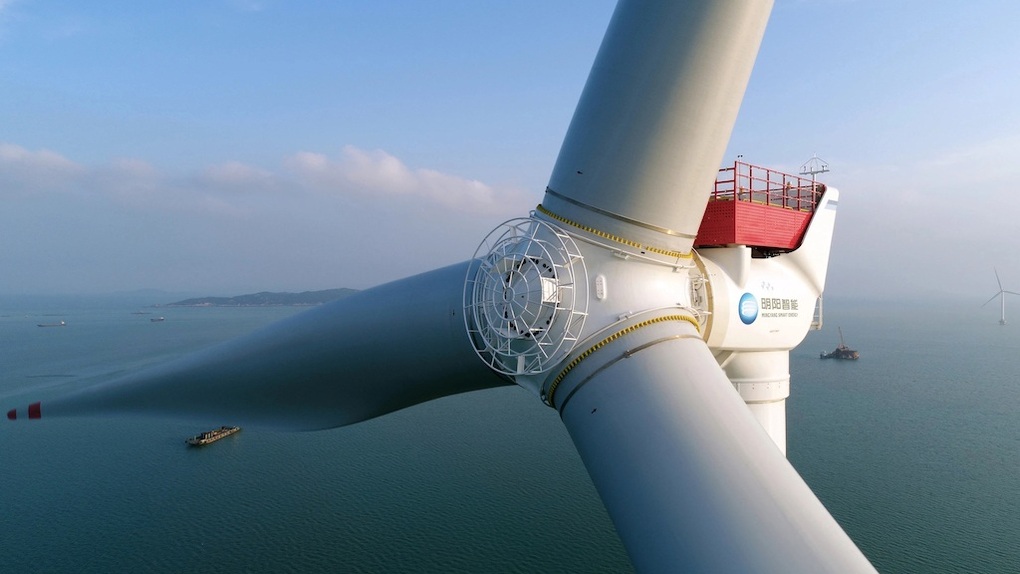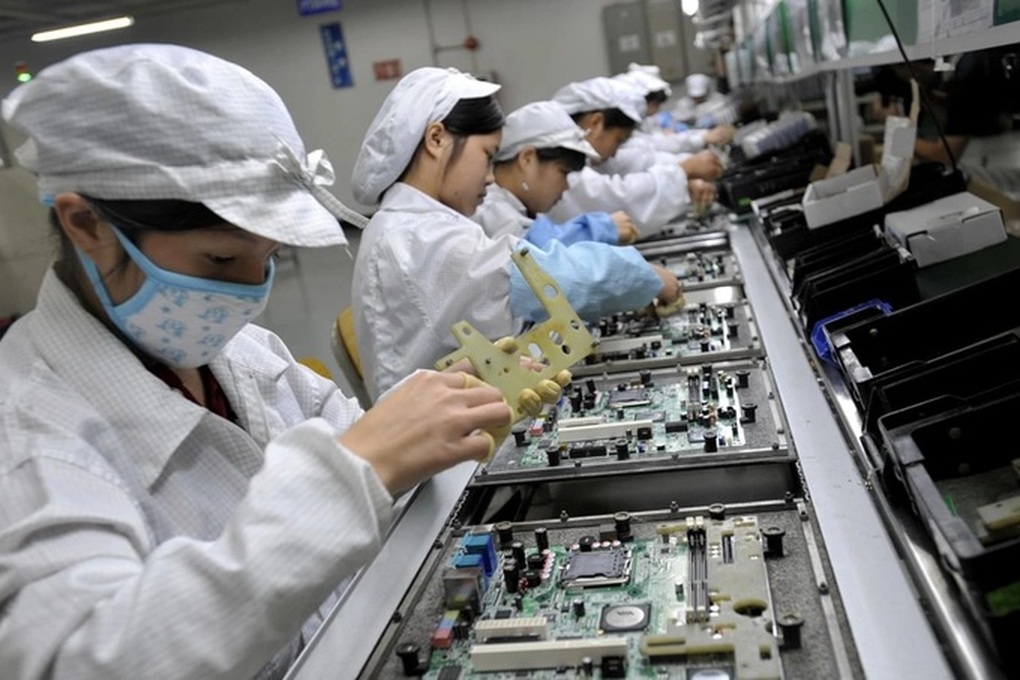
China expands the number of factories and production facilities, but environmental pollution levels decrease sharply (Illustration: SCMP).
For decades, China has been the " world 's factory" with rapid industrialization, but also faced serious environmental pollution.
However, in less than two decades, the country has made a remarkable transformation: the number of factories and manufacturing facilities has increased, but the level of environmental pollution has decreased dramatically.
This is considered a green technology revolution, a development model that both maintains production and controls environmental impact on an unprecedented scale.
Green technology revolution
Mr. Ma Jun, who founded the Institute for Public and Environment (IPE) in 2006, said the initial figures on environmental pollution in China shocked the public.
IPE monitoring data shows that about 28% of water sources nationwide are severely polluted and unusable, affecting nearly 300 million people and causing disease outbreaks in some areas.
This situation reflects the downside of hasty industrialization, when waste treatment systems and environmental management frameworks have not kept up with the speed of production expansion.
It is these dire warnings that have prompted China to tighten environmental policies and invest heavily in green technology.
Today, the picture has changed dramatically: more than 90% of national water quality monitoring points are rated as “excellent,” “good,” or “fair.”
China has also made great strides in controlling air pollution. EPIC data from 2015 to 2022 shows that the average annual concentration of PM2.5 has decreased by 35.6% nationwide.
This is a remarkable achievement, especially when major cities have suffered from thick “smog”, forcing schools and factories to temporarily close.
Behind this result is a combination of many factors: a widely deployed real-time environmental monitoring system, environmental tax and fee policies that encourage businesses to invest in clean technology, as well as a strong push to transition energy from coal to renewable sources.

The world's largest wind turbine, the MySE 16-260, was built by Mingyang Smart Energy (Photo: MSE).
Initiatives such as Blue Map allow the public to monitor corporate emissions in real time, creating pressure for transparency and forcing factories to comply with environmental standards.
At the same time, building circular industrial parks helps reuse raw materials, energy and minimize waste, contributing to the formation of a circular economy .
The environmental protection tax policy, applied since 2018, together with the market mechanism for emission sources, also contributes to creating a legal framework and economic incentives strong enough for businesses to voluntarily find solutions to reduce emissions.
International observers say China's success could be a testament to a new model of industrial development: instead of trading the environment for growth, it is entirely possible to maintain production momentum while improving quality of life through technological innovation.
Lessons for Vietnam
Like China in the past, Vietnam is facing a very serious air pollution situation.

With the expansion of production models and industrial zones, Vietnam needs to learn from developed countries to control pollution (Illustration: China Daily).
Based on monitoring results in 2021, only 6 provinces/cities met air standards QCVN 05:2013 (25 µg/m³) and no place met WHO standards (5 µg/m³), with PM2.5 dust being the main factor causing an increase in respiratory diseases in children, especially in the dry season from November to April.
Statistics in 2023 also show that the average PM2.5 index in Vietnam is nearly 6 times higher than the WHO's recommended level, especially in large cities such as Hanoi and Ho Chi Minh City.
In June 2024, UNICEF said Vietnam was the second most polluted country in ASEAN, and 22nd globally, with Hanoi ranking 8th among the world's most polluted cities.
In that context, experts believe that Vietnam can learn from China's experience through specific solutions such as: building a real-time environmental monitoring system, issuing environmental tax or fee policies, encouraging investment in green production technology, and developing a circular industrial park model.
However, to truly create efficiency in the environmental sector, there needs to be more transparency in environmental data, public monitoring tools, and incentives for businesses to invest in clean technology as has been successful in China.
If seriously implemented, lessons from China's green technology revolution can help Vietnam find a development path that both protects the environment and promotes sustainable economic growth.
Data sources: WHO, UNICEF, EPIC, IQAir, MEE
Source: https://dantri.com.vn/khoa-hoc/bai-hoc-tu-cuoc-cach-mang-cong-nghe-xanh-cua-trung-quoc-20250909082239230.htm


![[Photo] General Secretary To Lam meets former British Prime Minister Tony Blair](https://vphoto.vietnam.vn/thumb/1200x675/vietnam/resource/IMAGE/2025/10/30/1761821573624_tbt-tl1-jpg.webp)
![[Photo] The Third Patriotic Emulation Congress of the Central Internal Affairs Commission](https://vphoto.vietnam.vn/thumb/1200x675/vietnam/resource/IMAGE/2025/10/30/1761831176178_dh-thi-dua-yeu-nuoc-5076-2710-jpg.webp)
![[Photo] National Assembly Chairman Tran Thanh Man receives foreign ambassadors who came to say goodbye](https://vphoto.vietnam.vn/thumb/1200x675/vietnam/resource/IMAGE/2025/10/30/1761820977744_ndo_br_1-jpg.webp)
![[Photo] Touching scene of thousands of people saving the embankment from the raging water](https://vphoto.vietnam.vn/thumb/1200x675/vietnam/resource/IMAGE/2025/10/30/1761825173837_ndo_br_ho-de-3-jpg.webp)
![[Photo] General Secretary To Lam attends the Vietnam-UK High-Level Economic Conference](https://vphoto.vietnam.vn/thumb/1200x675/vietnam/resource/IMAGE/2025/10/30/1761825773922_anh-1-3371-jpg.webp)










































































































Comment (0)